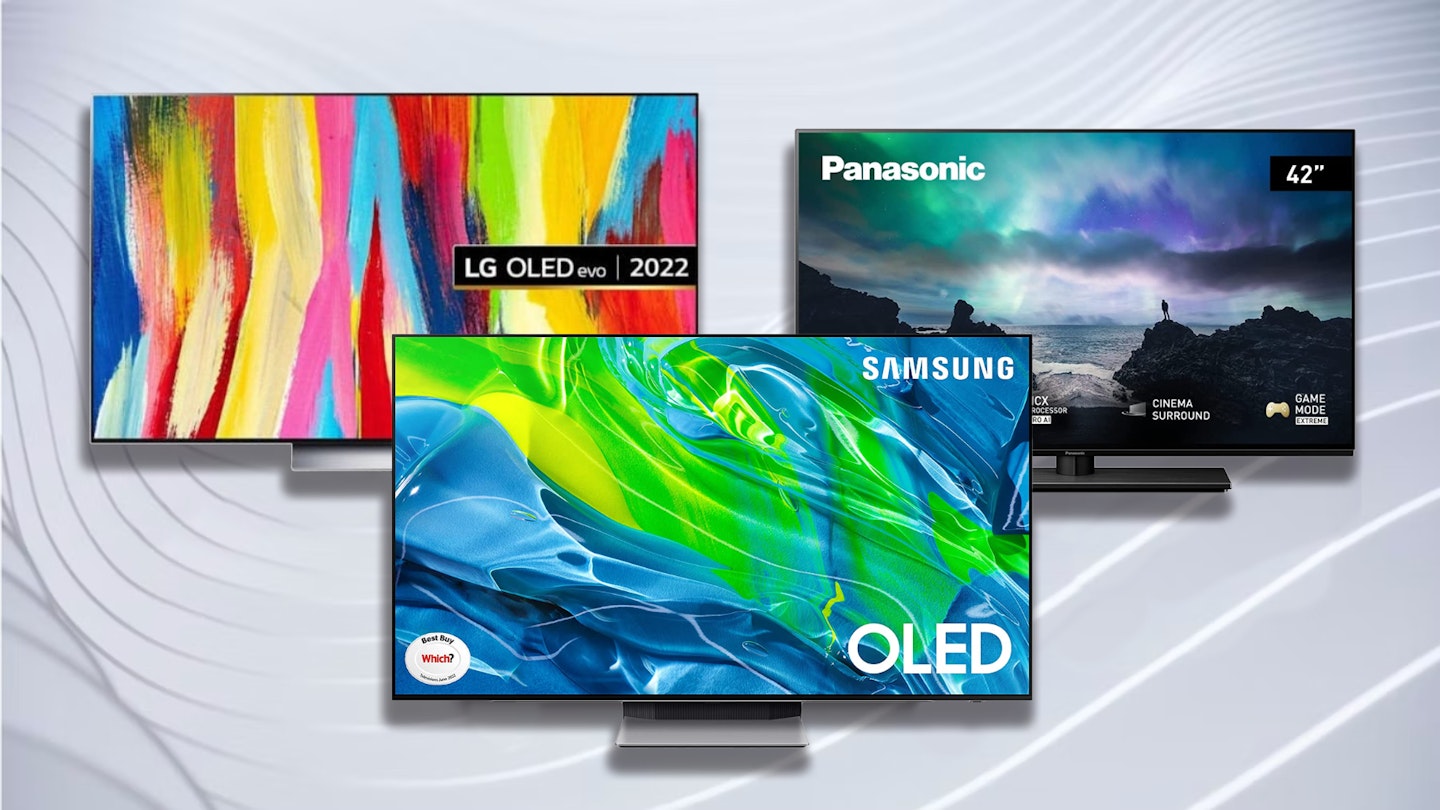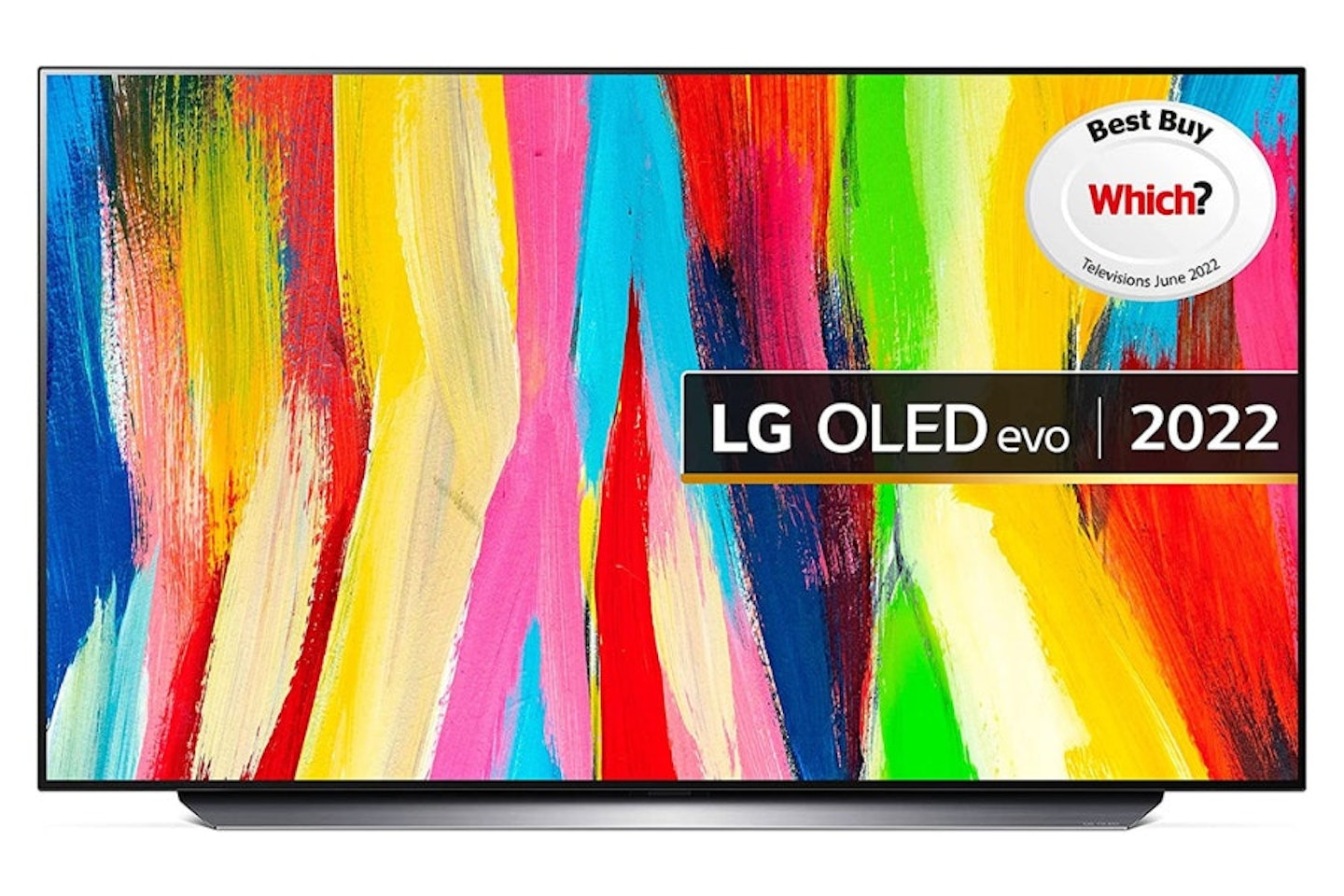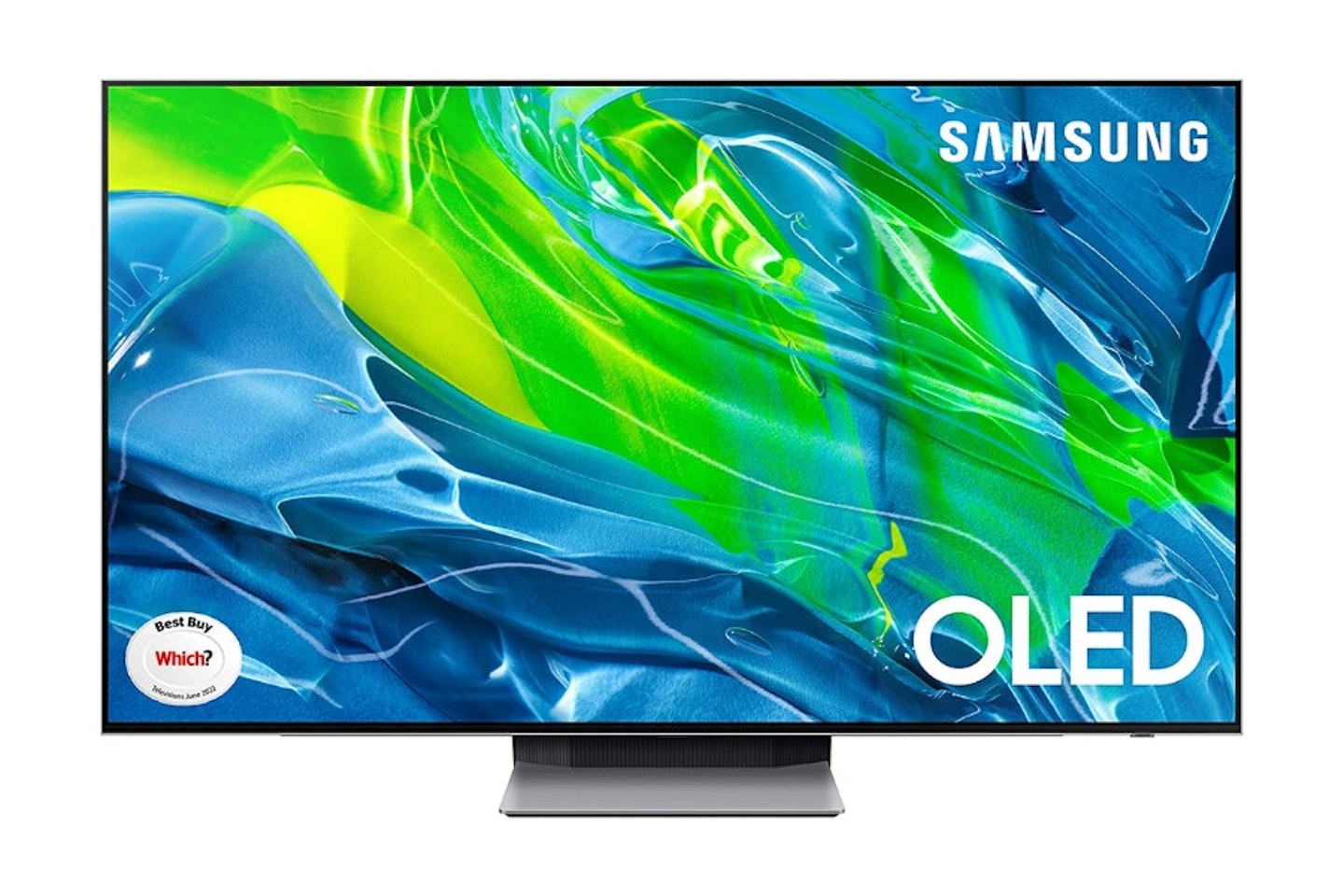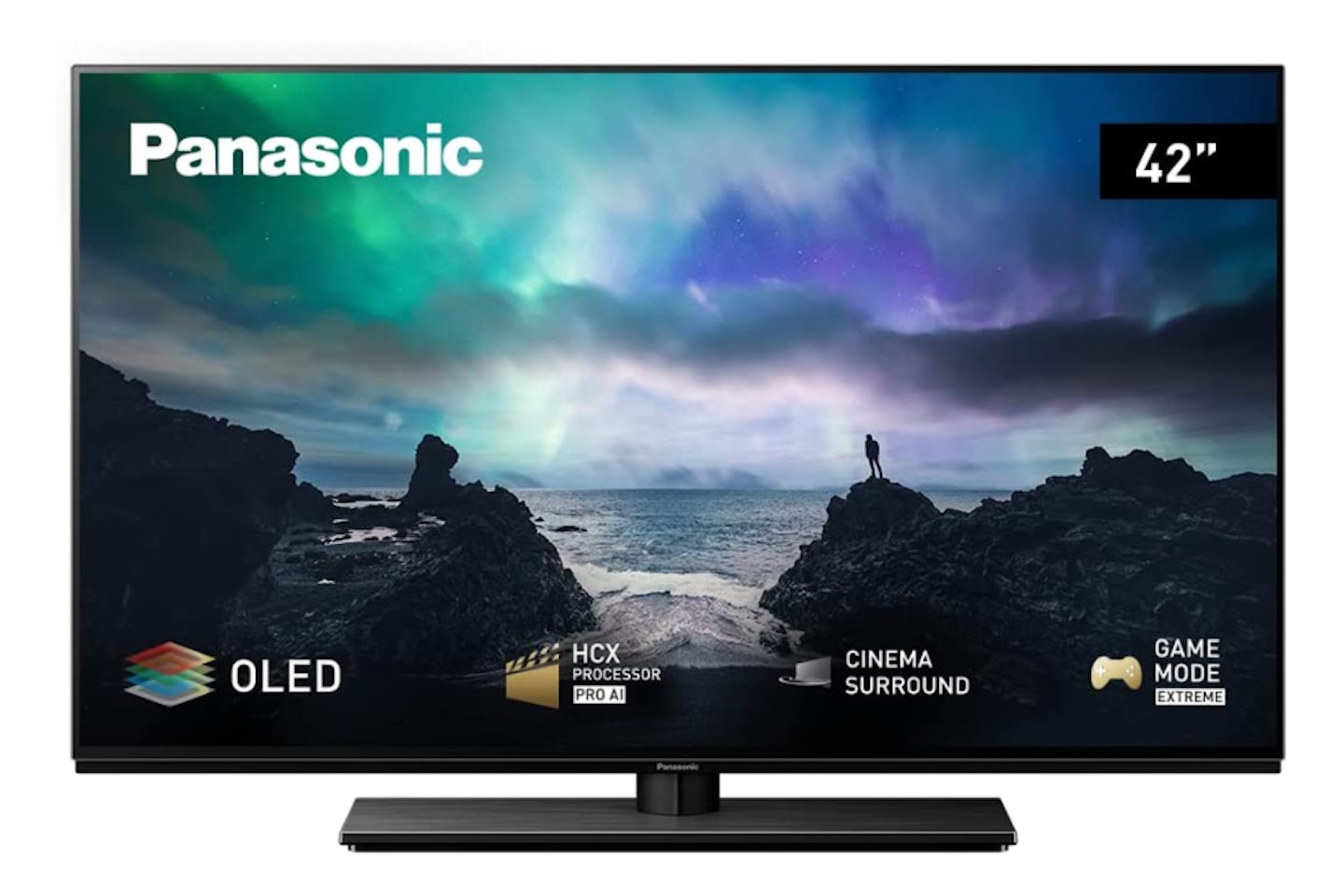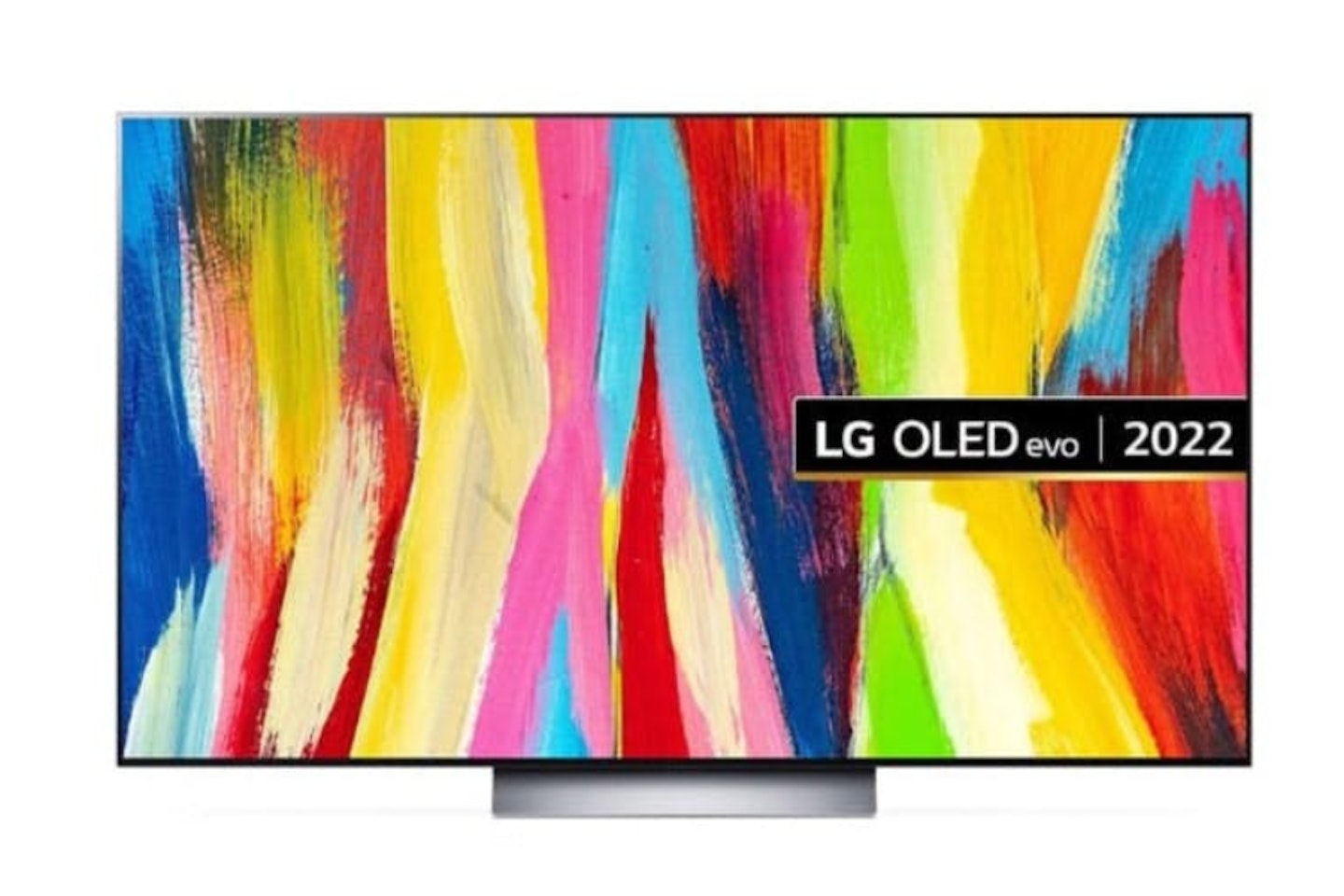At last, some of the best TVs we've seen recently have mass-market appeal - and they're easily the best OLED TVs. Definitely one of the most phenomenal developments in display technology for decades, OLED TVs started life as a premium option, moving into the reach of most buyers at a snail's pace. We're including the relatively new QD (Quantum Dot) OLED models here, too, as in many ways, they're a genuine enhancement to standard OLED without being a different technology.
Yes, we'll admit that they're still a little more expensive than standard LED screens, but this is a real-world example of 'you get what you pay for' - and OLED is a seriously worthy upgrade. Thankfully, OLED TVs come in a wider range of sizes these days. So, if you're in the market for one of the best 65-inch or 70-inch TVs, OLED is now a real and affordable option.
The best OLED TVs at a glance
• Best value OLED TV: LG OLED C2 65" 4K Smart TV - View now on Amazon.co.uk
• Best overall OLED TV: Samsung S95B QD OLED 4K Smart TV 65" - View now on Amazon.co.uk
• Best OLED TV under 50-inch: Sony BRAVIA XR-48A90K - View now on Amazon.co.uk
Organic LEDs are a breakthrough in LED design. Rather than the bulky light-emitting diodes you'll find in normal household devices, these are each small enough to represent a pixel on your screen. Firstly, this means detail and excellent colour reproduction - ideal for HDR content.
Secondly, as they can be controlled individually, they can be turned off. That means they emit zero light, giving you the truest black you can get. They also don't require a traditional backlight to create a bright enough picture. An OLED panel also has a wider viewing angle than an LED screen. Movie fans and gamers love OLED screens, mainly due to the higher refresh rates on offer.
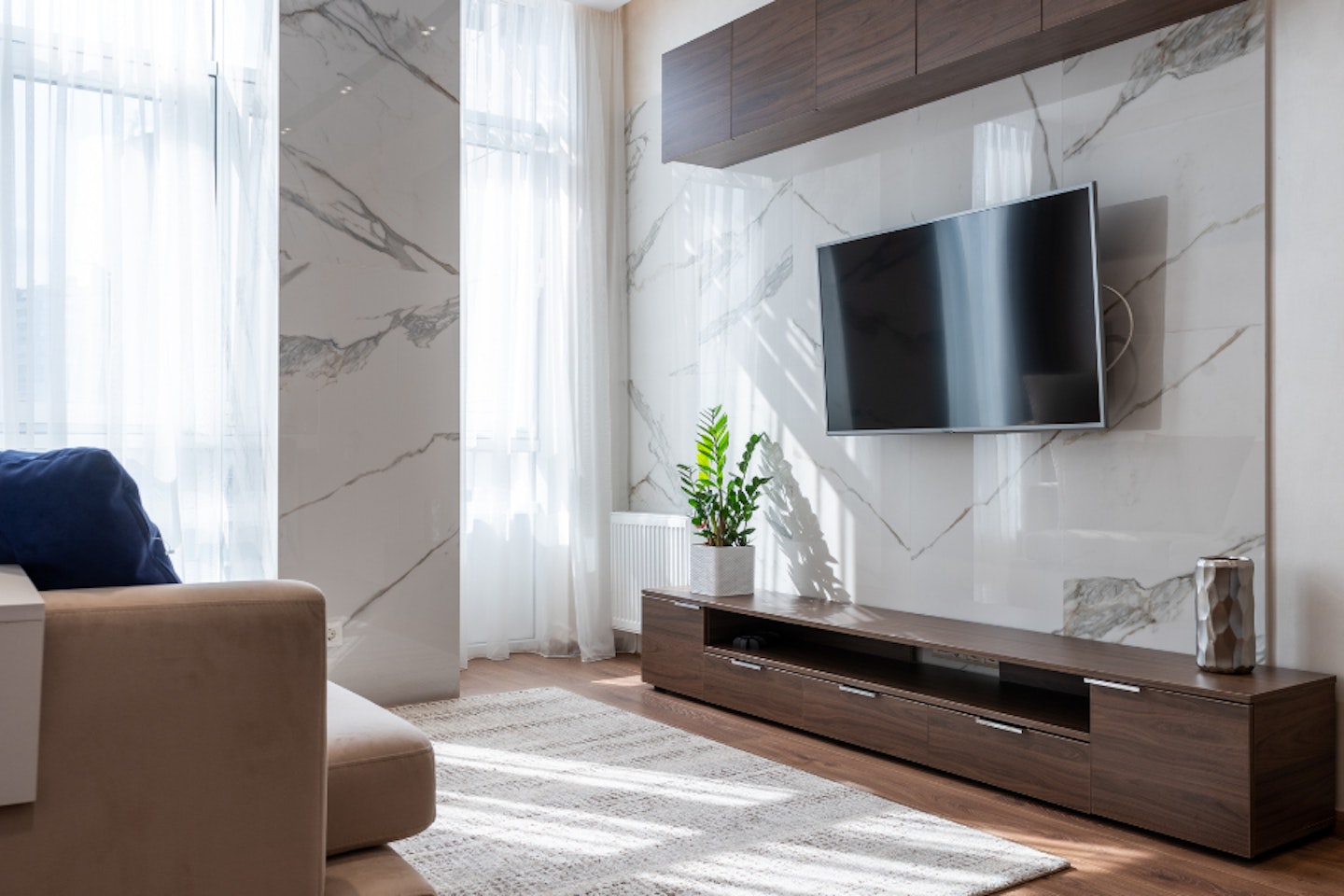
So, having made the decision to go for OLED, the rest will come down to finding the features you need. Consequently, if you're looking for a new TV that'll satiate your inner film critic or competitive PS5 and Xbox gamer, we've got some exciting options below that you won't want to miss. For those who need more technical info and help with choosing the best OLED TV, make sure you check out our FAQ section at the end of the article.
The best OLED TVs
Best value OLED TV
Considering that this LG OLED C2 is edging towards the larger screen bracket, we think this is incredible value for money. LG has packaged the picture quality of OLED into a minimalist ultra-thin TV with LGs signature build and design. This is a stunning 4K TV that sports the next generation of α9 Gen5 AI processors that improve and upscale image quality in real time. It even maximised depth of field and performs Body and Object enhancement for even more realism. There's Dolby Vision for that all-important HDR performance, and the whole set is complemented by Dolby Atmos sound.
A key feature here, in OLED terms, is the 0.1ms response time. Then, in addition to the low input lag, the C2 also has a variable 120Hz refresh rate - compatible with Nvidia G-Sync, AMD FreeSync. All in all, this much high-tech goodness will deliver a seriously snappy experience for gamers - and all at amazing value for an OLED set.
Pros
- Fantastic value for a superb OLED TV
- Bright picture for an OLED set
- 120hz and low input lag
- Solid build quality, very light and thin body
Cons
- Sound could be improved with a soundbar
- Some may find the remote fiddly
| Resolution: | 3840 x 2160 |
| Screen size: | 65" |
| Refresh rate: | 120hz |
| HDR: | Yes |
| Connections: | 4 x HDMI 2.1 |
| Energy Rating: | G |
| Additional features: | α7 Gen5 AI processor, Dolby Vision IQ, Dolby Atmos, Nvidia G-Sync, AMD FreeSynch |
- Customer review: "Very pleased with both picture & sound quality and compatible with a contemporaneous upgrade to Sky Q and fibre Wi-Fi. The only disadvantage I can see is the ‘ease’ that certain functions, such as Audio Description and Audio Guidance, can be accidentally activated and the subsequent difficulty in reversing unwanted features."
Best overall OLED TV
Perfect for gamers and movie buffs, this seriously brilliant 65" S95B from Samsung ticks almost all of the boxes when it comes to sheer picture quality. And it achieves this through the Quantum Dot version of OLED (more on that in the buyer's guide at the end of the page).
In short, the one shortcoming of many an OLED TV is brightness - those tiny pixels have to emit their own light as there's no backlight. QLED screens get over this by using a backlight, colours and brightness are better, but blacks can be washed out with poor contrast. QD OLED gives you the sweet spot between both of these panel types.
This is an awesome piece of entertainment kit, with a 120hz variable refresh rate to keep fast-motion content like sports or gaming crisp, smooth and free from screen tear.
Pros
- Stunning HDR with fantastic contrast
- Fantastic refresh rate
Cons
- No Dolby Vision for top-of-the-line HDR
| Resolution: | 3840 x 2160 |
| Screen size: | 65" |
| Refresh rate: | 120Hz |
| HDR: | Yes |
| Connections: | HDMI 2.1 x 4, USB 2.0 x 3 |
| Energy rating: | G |
| Additional features: | Google Assistant, Alexa, AMD FreeSync, Game Motion Plus, Motion Xcelerator Turbo Pro |
- Customer review: "If, like me, you think it is too early for 8k, then this TV could be for you. The quantum dot tech truly transcends the 4k experience to give you an intensely sharp, smooth, eye-popping picture when watching movies or gaming. Highly recommended."
Best OLED TV under 50-inch
Sony's Bravia XR-48A90K OLED TV is remarkably refined, with a super-thin screen with tiny bezels. It's an absolute beast when paired with a PS5 due to its faultless 120 Hz refresh rate and Sony's special 'Perfect for PlayStation' features built into its XR models. One such feature is Auto Tone Mapping which adjusts your PS5 games' HDR colour performance based on whatever is on the screen.
At a very respectable 48 inches, this 2022 OLED TV is large enough to satisfy most viewers; but if you're looking for something just a little larger, there are, of course, plenty of 55-inch TVs to choose from. This one is slightly smaller, but make no mistake - it packs a technical punch. It has all of the usual Sony tricks like HDR and smart TV functions, but one serious piece of Sony wizardry is its XR Triluminos Pro technology. This enables a wider colour palette to further enhance the HDR experience.
Acoustic Surface Audio+, standard in most modern Sony TVs nowadays, turns the surface of the screen into the speaker. So, in sound terms, the origin of the sound can be 'moved' with the picture. The dialogue will seem more natural, and sound effects are certain to enthral.
Pros
- Can comfortably fit into more compact living spaces
- OLED screen
- XR Triluminos Pro for better HDR
- Variable refresh rate
- 2-way stand
Cons
- Only two USB ports
| Resolution: | 3840 x 2160 |
| Screen size: | 48" |
| Refresh rate: | 120Hz |
| HDR: | Yes |
| Connections: | 4 x HDMI 2.1 x 2 |
| Energy rating: | G |
| Additional features: | 4K X-Reality PRO |
- Customer review: "Only had the television for a couple of days but so far it is promising to be one of the best televisions I have bought. It was easy to attach the base and great to be able to choose the height of the telly. Setting up was easy just follow the onscreen instructions."
Best 65-inch OLED TV
Samsung appears for a second time on our list - and for good reason. The S95C QD OLED TV is a 65-inch powerhouse packed with all of the usual Samsung goodies for your viewing pleasure. As expected, once again, you have the benefits that Quantum Dots bring to the OLED panel. But you also have a massive screen housing smart TV apps, Alexa voice assistant built-in, Dolby Atmos DTS
With a variable refresh rate of 120hz, HDR, and auto-upscaling to 4K, this is a stunning OLED model that won't disappoint.
Pros
- Incredible ground-breaking screen technology
- Excellent 60w sound
- 120Hz variable refresh rate
Cons
- Tizen OS is fast, but UI isn't to everyone's taste
| Resolution: | 3840 x 2160 |
| Screen size: | 65" |
| Refresh rate: | 120Hz, variable |
| HDR: | Yes |
| Connections: | 4 x HDMI 2.1 |
| Energy rating: | G |
| Additional features: | Ultra Viewing Angle With Anti Reflection Screen, Dolby Atmos DTS:X Object Tracking Sound |
- Customer review: "I am using this as a monitor in my office to connect various workstation PCs by way of a KVM switch. And I am very pleasantly surprised at the good looks and great picture quality."
Best small OLED TV
Finding an OLED screen around 48 inches from a premium brand is a rarity. Even more so when that TV has all of the major HDR standards built into it. Yes, when it comes to supporting the richest, widest and deepest colour palette, this has HDR10, HDR10+, Dolby Vision and even HLG (Hybrid Log Gamma). There's also Netflix Calibrated Mode for an optimal binge-watching experience. The 4K panel is paired with Panasonic's HCX AI Processor; this will finesse colour, contrast and detail on the fly for the very best picture no matter what you're watching.
Sound-wise, you have Dolby Atmos surround sound, although - as with many smaller TVs - you may want to consider a soundbar for a fully immersive audio experience. There's even a Game Mode to enhance those late-night multiplayer matches. All in all, this set from Panasonic is an OLED gem to suit smaller rooms without compromise.
Pros
- Fantastic HDR support
- 120Hz variable refresh rate
Cons
- Sound could do with a boost from a soundbar
| Resolution: | 3840 x 2160 |
| Screen size: | 48" |
| Refresh rate: | 120Hz, variable |
| HDR: | Yes |
| Connections: | 4 x HDMI 2.1 |
| Energy rating: | G |
| Additional features: | HCX PRO AI Processor, Dolby Vision, HLG, HDR10 or the new HDR10+ |
- Customer review: "The setup of the TV was simple and it connected to Freeview and the streaming channels with ease. The BBC iPlayer even allows me to stream in UHD which the version on the Apple TV does not so bonus there. Speed of response is great. The only downside (and it is a minor gripe) is the HUGE remote control - I guess I have been spoilt with the Apple TV remote."
Best OLED TV for gaming
LG really has maxed out the spec when it comes to gamer-friendly features on this top-of-the-range C2 OLED TV. The HDMI 2.1 ports will support a response time of 1 ms, so again, this works with low input lag to make gaming super-snappy. But here's the killer gaming feature: 120hz variable refresh rate and support for both AMD and NVIDIA-based games
Dolby Atmos is present, so you can expect immersive sound from the punchy built-in 40W speakers. There's the usual real-time AI picture-enhancing tech, and LG's Game Optimiser, to further heighten your gaming experience. This is close to being a perfect gaming TV in terms of future-proof features; It could be a long time before you'll feel the need to upgrade this undisputed king of gaming TVs.
Pros
- One of the fastest displays ever made
- Fantastic picture quality
- Total console support with G-Sync and FreeSync tech
Cons
- The sound would benefit from a soundbar for those who want more bass
| Resolution: | 3840 x 2160 |
| Screen size: | 55" |
| Refresh rate: | 120Hz, variable |
| HDR: | Yes |
| Connections: | HDMI 2.1 x 4, USB 2.0 x 3 |
| Energy rating: | G |
| Additional features: | Google Assistant, Alexa, AMD FreeSync, NVIDIA G-Sync, Game Optimiser |
- Customer review: "Great product I'm now getting 120FPS on my PS5. Easy to set up even though there are a lot of options. Only downside is the sound settings do take a while to dial in without a sound bar but once you get it right it's good."
Frequently asked questions
What is OLED?
As mentioned in the intro, Organic Light Emitting Diodes, or OLEDs, are an alternative to traditional LED or LCD panels. They're each small enough to represent an individual pixel. They don't need a separate backlight to create bright images and can be turned off at the pixel level. This means they have lower power consumption but also faster response times; high refresh rates are fantastic for gaming and fast-motion content like sports. OLED TVs are also much thinner than typical screens, which looks fantastic - especially wall mounted.
What is QD OLED?
Effectively, this is based on the same technology as OLED. The QDs (Quantum Dots) generate colours differently than normal OLEDs. The light they emit is based on blue light that is higher in output, so they are efficient and produce brighter images and more intense, truer colours. QD OLEDs are a hybrid of two technologies - backlit QLED panels and OLEDs. They combine the strengths of both. This means the picture is brighter with a wider colour palette and without much compromise when it comes to inky blacks and excellent contrast.
Do I need an OLED TV?
Although much more affordable than they were even five years ago, OLED TVs are still a slightly more expensive option inch-for-inch. However, as with our selection above, Amazon and other major retailers have some fantastic TV deals. So, if you're dead-set on a top-of-the-line TV for gaming, home cinema, or just casual binge-watching, now's the time to buy one.
Is OLED better than QLED?
There's no definitive answer. They're both brilliant, but as always, they have individual strengths and weaknesses. It's true that OLED while creating incredibly beautiful and natural images, can look a little dimmer than QLED. This is because OLEDs generate their own light, whilst QLEDs are separately backlit. However, with a separate backlight comes washed-out blacks, thanks to some blooming around brighter objects. The best QLED TVs provide an excellent colour range though, helped by the backlight. However, as with all competing technologies, the gap between them is closing.
What is refresh rate?
Refresh rate is how fast a screen can create a new image per second. A screen with a 60 Hz refresh rate can create 60 images per second. The more images it shows per second, the smoother and more natural any fast-motion content will look. Many screens, particularly some of the best 4K TVs, can support output at an incredible 120hz. This is perfect for watching sports or gaming.
Subscribe to the What's The Best Newsletter to keep up to date with more of the latest reviews and recommendations from the rest of the What's The Best team.
Chris Duffill is a Tech Product Writer for What's The Best. He specialises in audiovisual, computing, and gadgets. He also writes for Yours.
